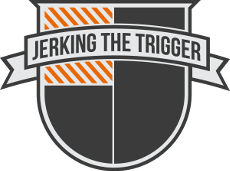The Brunton 15TDCL Compass has gone through some changes over the years. For a while, it was the only “true” Silva Ranger Type 15 compass that we could get easily here in the USA. The Silva branded compasses that we have here in the USA are actually made in a variety of countries and sold under the Silva name (you can read more HERE). Brunton used to be importing the real Silva Ranger compasses under their brand but sadly it seems those days are gone. The new 15TDCL compasses are made in China. However, if most 15TDCL compasses are like the one that I am reviewing, they are still very decent compasses.
Features
- Adjustable declination
- Clinometer
- Luminous points
- 1:24,000 and 1:50,000 UTM corners
- Magnifier
- Lifetime warranty
What Makes it Great?
In spite of my initial disappointment with the compass not being Swedish made, it still retains many of the features that made the Silva Ranger great. It is a lot of compass for the money.
UTM Corners
The best feature of the 15TDCL are the UTM corners on the base plate. I usually use a GPS along with my map and compass. Being able to generate UTM coordinates makes it very easy to translate your GPS information to your map or vice versa. I wish every compass had these on the base plate! They are useful for measuring distance on your map as well.
Luminous Points
The luminous points on the 15TDCL glow long and strong. They really outclass every compass that I have except my tritium Cammenga lensatic compasses, but that isn’t really a fair comparison. These great luminous points allow the 15TDCL to be used more easily in low light which can be a real asset when you find yourself still a few miles from camp and down in a deep hollow just before sunset.
In Use
A common complaint with some Asian/Pacific made compasses centers on the bezel being able to move too freely. The bezel moves freely but stays in position well on my 15TDCL. Bezel tension is just right. It is also relatively easy to use with gloves and it is very readable. The adjustable declination screw is on the top of the bezel which is nice.
There is a small hole below the mirror that may be some kind of sighting hole like the one on the previously reviewed Suunto MC-2G. However, it is too small and lacks a notch. It just doesn’t work near as well as the well designed sighting hole on the Suunto.
The 15TDCL is a joy to use with a map thanks to the previously mentioned UTM corners and the 3 silicone “feet”. These feet do a good job of keeping the compass from sliding around on your map. The base plate markings are black but are still pretty readable when used with a map. The markings are also very deeply inset into the base plate which will help it stay readable over years of use.
What Could Be Better?
There is a small amount of “slop” or “play” between the inner compass module and outer ring of the module (the part that has the degree markings). It is a small amount of movement, but I don’t need any more margin of error introduced to my already less than precise orienteering. It hasn’t affected function at this time, but if it gets worse, I will contact Brunton (who has very good customer service).
The marking holes on the UTM corners could be larger. They are so narrow that it takes a very sharp pencil or narrow pen in order to mark your map with them.
Overall
While the 15TDCL may not have the real pedigree of the Silva Ranger anymore, it is still very derivative of the venerable Ranger. If offers a lot of the same functionality. This compass is a solid value in mirrored sighting compasses. It works.

















